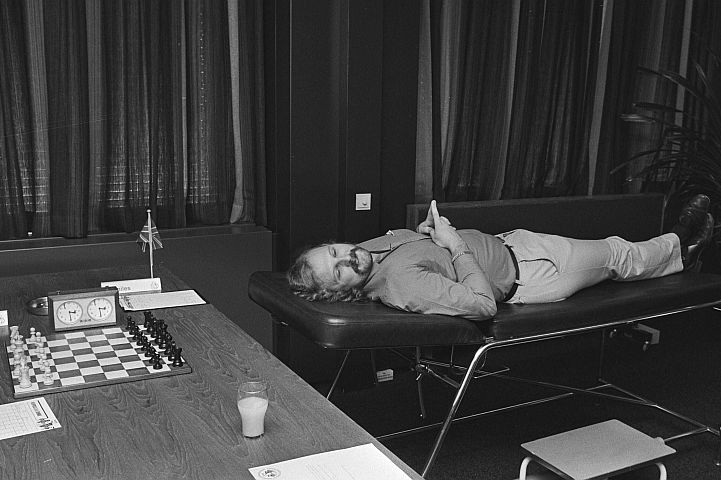The "Special" of CBM #212: Anthony Miles
In 1976 Anthony Miles became the first Englishman to win the title of International Grandmaster. Over the next few years “the Beast of Birmingham” matured into an absolute world-class player who distinguished himself, among other things, by special originality in the opening - in 1980, for example, he defeated none other than the reigning World Champion Karpov after the moves 1.e4 a6 as Black.
One of Miles' greatest tournament successes was winning Tilburg in 1984 by a point and a half. Even more memorable was his participation the following year, when a back injury forced him to play many of his games lying on his stomach. In 1986, the Englishman was at the peak of his career with a rating of 2635 and 9th place in the world rankings. In the years that followed, Miles struggled with mental problems, possibly due to his immense chess activity. But in the 90s he still won various major tournaments, including the Capablanca Memorial four times. In November 2001, Anthony Miles died at the age of only 46 as a result of diabetes.
The Queen's Indian Variation 1.d4 Nf6 2.c4 e6 3.Nf3 b6 4.Bf4 is named after Miles, which he successfully applied in the following spectacular game, annotated by Robert Ris.
Anthony Miles – Boris Spassky (Montilla (2), 1978)
Annotated by Robert Ris
1.d4 Nf6 2.Nf3 b6 3.c4 e6 4.Bf4
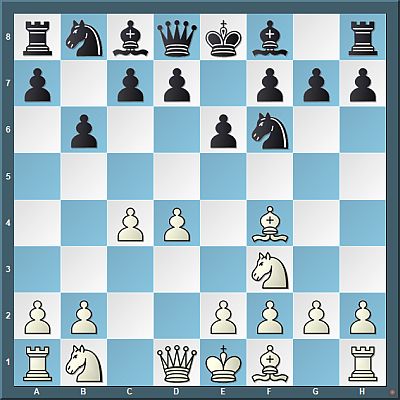
A specialty of Miles. This natural developing move has never been as popular as the main lines arising from 4.g3 or 4.a3, but Miles had some great successes with it in the period 1978–1980.
4...Bb7 5.e3 Be7 6.h3 Preserves the dark-squared bishop, but it's a bit slow.
A modern approach is 6.Nc3 not fearing 6...Nh5 7.Bd3!? with interesting play.
6...0–0 7.Nc3 d5

8.cxd5?! Alternatives are 8.Rc1 and; 8.Be2 but in both cases Black seems to be doing fine anyway.
8...exd5?! 8...Nxd5! 9.Nxd5 Qxd5! is totally fine for Black. Particularly White's move h2–h3 proves to have been a waste of time. 10.a3 (10.Bxc7? Rc8! is asking for problems. 11.Bg3 Bb4+ 12.Nd2 Nc6 with excellent play, e.g. 13.a3 Bxd2+ 14.Qxd2 Na5! and White is in trouble.) 10...c5=
9.Bd3 c5 10.0–0 Nc6 11.Ne5 c4 Black could have transformed the pawn formation with 11...cxd4 12.Nxc6 Bxc6 13.exd4 but White can count on a very stable edge, as Black's bishop on c6 isn't great.
12.Bc2 a6 13.g4
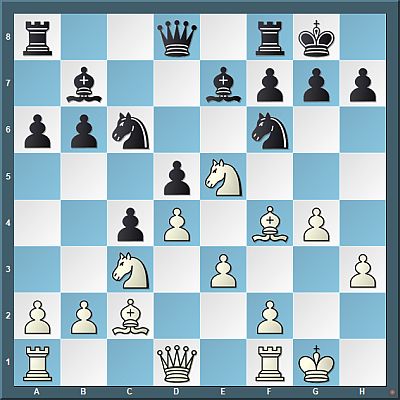
The start of a very interesting plan, but it's too optimistic.
Sounder is 13.Qf3! b5 14.a3 followed by Rad1 (discouraging Black from taking on e5).
13...b5 14.g5 Ne8 14...Nd7 is an important alternative. 15.Nxc6!? (15.Nxd5 Ncxe5 16.dxe5 Nxe5 17.Bxe5 Qxd5 18.Qxd5 Bxd5 and Black is doing alright.; 15.Qg4? Ndxe5 16.dxe5 Nb4! 17.Bb1 d4! and Black seizes the initiative.; 15.Qh5 g6 16.Nxg6 fxg6 17.Bxg6 hxg6 18.Qxg6+ and White has nothing more than a draw.) 15...Bxc6 16.Qg4 is probably White's best shot. One idea is to reroute the knight via e2 to g3 and f5.
15.Qg4 15.h4 is apparently a better move, so that in case of 15...Nxe5 White can recapture with the bishop.
15...g6
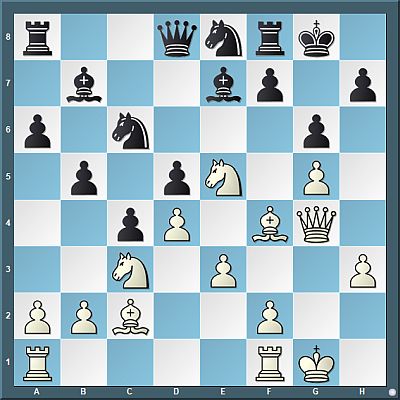
A later game saw 15...b4! 16.Ne2 g6 17.h4 Ng7 18.Ng3 Nxe5 19.Bxe5 Bc8 20.Qf3 f6! 21.gxf6 Bxf6 22.Bxf6 Rxf6 and Black was actually taking over in Burkart-Berg, Germany 2003.
16.Rad1 16.Qd7!? initiates a forcing sequence. 16...Nxe5 (16...Qxd7? 17.Nxd7 drops the exchange.) 17.Qxb7 Nf3+ 18.Kg2 Nh4+ 19.Kh1 Bxg5 20.Bxg5 Qxg5 21.Qxd5 Qxd5+ 22.Nxd5 At first sight White seems to be better (bishop vs. knight + mobile pawn formation), but the machine says that Black is fine after 22...Rd8
16...Ng7 16...b4! 17.Ne2 Nxe5 18.dxe5 Qb6 Like on move 15, would still have been a good idea for Black.
17.h4 17.Qd7!? again comes into consideration.
17...Bb4? Probably based on a tactical oversight.
17...Nxe5? 18.dxe5 can't be recommended, as White has tactical ideas against the pawn on d5.; 17...b4! could still have been tried.
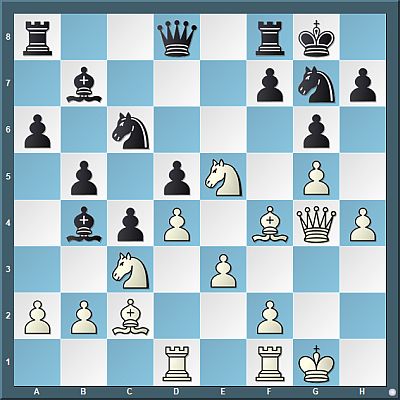
18.Nd7! Likely Spassky's plan was to trade off a number of minor pieces, e.g. 18.a3 Bxc3 19.bxc3 Nxe5 20.Bxe5 Bc8! followed by ...Bf5, when Black is doing OK it seems. His dark-squares around his king are seriously weakened but at least for now, White doesn't seem to be able to get his queen involved.
18...Bc8 18...Re8 19.Nf6+ is hopeless.
19.Nxd5! A nice tactical shot. Was this perhaps overlooked by Spassky?
19...Kh8 Getting out of the check on f6, but stepping into a very dangerous a1–h8 diagonal.
19...Bxd7 is met by 20.Qxd7! (20.Nf6+? is bad, on account of 20...Qxf6! 21.gxf6 Bxg4–+) 20...Qxd7 21.Nf6+ Kh8 22.Nxd7 and White is winning.
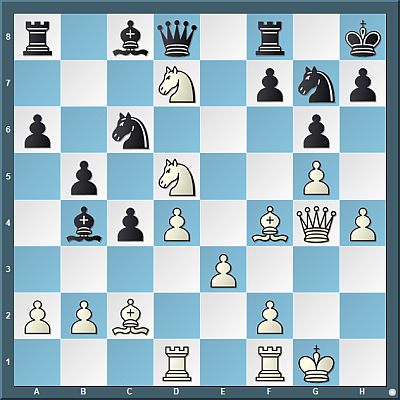
20.N5f6! Ra7 21.d5 Another promising idea is 21.h5! Nxh5 22.Nxh5 Bxd7 23.Qh4 gxh5 (Otherwise the knight comes back to f6). 24.d5! (24.Qxh5? is strongly met by 24...f5! and things will only get worse in case of 25.gxf6? Rg8+ 26.Kh2 Bg4–+ and the rook on a7 is a great defender!) 24...Ne7 25.Be5+ f6 (25...Kg8 runs into 26.Bxh7+! Kxh7 27.Qxh5+ Kg8 28.Qh8#) 26.gxf6 Ng6 and White is winning. 27.Bd4!? (27.Qxh5+– also suffices.) 27...Nxh4 28.f7+
21...Ne7 21...Bxd7 22.Nxd7 Rxd7 23.dxc6 is just lost for Black.
22.Be5?
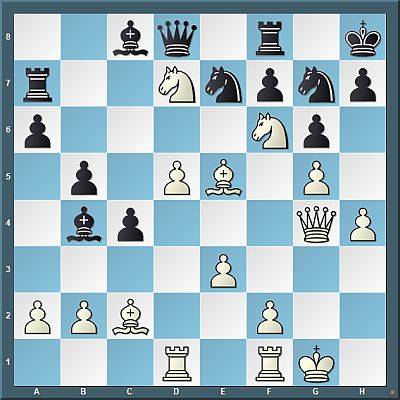
The start of a nice plan to infiltrate Black's position via the dark-squares. However, the silicon monster points out here that White should have started with 22.a3! to deprive him from the option offering the exchange of bishops on move 23. 22...Ba5 23.Be5+–
22...Rxd7! The pointe of White's previous move is that 22...Bxd7 can be met by 23.Qd4! hitting the unprotected rook on a7, while in case it moves there is a discovered attack on the knight on g7 with 24.Nxd7.
23.h5?! 23.Qd4? no longer makes any sense, in view of 23...Nc6! 24.dxc6 Rxd4 25.Rxd4 Qe7–+ and Black is more than fine.; 23.Nxd7 Qxd7 24.Qd4 Qg4+ forces the exchange of queens and neutralizes the threat on g7.; 23.Qf4! is objectively speaking the best move, but would Miles have considered it? Apparently, the only move to stay in the game now is 23...Ng8! 24.d6 Nxf6 25.Bxf6 Qb6 26.h5! Rxd6 27.Rxd6 Qxd6 28.h6 Kg8 29.hxg7 Re8 30.Qxd6 Bxd6 31.Rd1 Bc7 and Black is fighting for his life still...
23...Rxd5? Underestimates the danger of his position. No matter what, Black should have tried to get rid of White's dark-squared bishop.
23...Bd6! 24.Bd4 (24.Bc3!? is perhaps more accurate, but to me it doesn't seem natural to give Black the chance to hit the bishop one more time with ...b5–b4.) 24...Rc7 25.h6 Bxg4 26.hxg7+ Kxg7 27.Nh5+ Kg8 28.Nf6+ is a beautiful draw. 28...Kh8 29.Nxg4+ f6 30.gxf6 Nf5 31.Bxf5 Bc5 (31...gxf5?? 32.f7+ leads to mate.) 32.Be5 (32.Bc3) 32...Bd6 33.Bd4 Bc5=
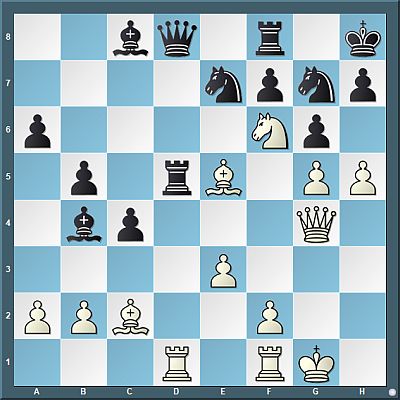
24.Qf4! Now Black is simply lost, as it turns out he is unable to eliminate White's most dangerous piece: the bishop on e5.
24...Rxd1 25.Rxd1 Qa5

26.Ne8! White has several winning moves, but credits to Miles for finding the most elegant way converting his advantage.
26.h6!+–
26...f6 26...Rxe8 27.Qxf7 Rg8 (27...gxh5 28.Qxg7#; 27...Nef5 28.Qxe8+) 28.h6 and mate is inevitable.
27.gxf6 Kg8 27...Nxe8 28.f7+ Ng7 29.Bxg7+ Kxg7 30.h6+ Kh8 31.Qf6#
28.Nxg7 and Spassky had seen enough here and resigned.
1–0
You can find the complete analysis along with many other annotated games of Anthony Miles in the new ChessBase Magazine #212.
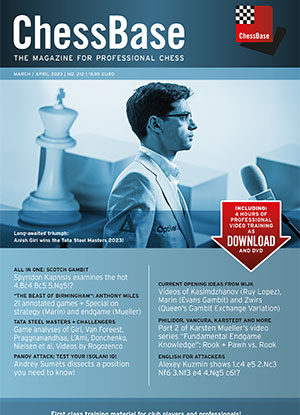
Order now in the ChessBase Shop !
ChessBase Magazine trial subscription with 33% savings advantage and thank you bonus!*
Try out ChessBase Magazine now! Order the ChessBase Magazine taster package!
Read ChessBase Magazine for 6 months (= 3 issues) for the special price of only 39.90 € (instead of 59,85 € for buying them individually). As a thank you, you will also receive 3 months ChessBase Premium Membership free of charge.
*Bonus for new subscribers only, i.e. there was no CBM subscription for 12 months!
ChessBase Magazine one year subscription - plus original ChessBase USB stick with 128 GB *
Save twice with ChessBase Magazine: For the annual subscription to ChessBase Magazine you’ll pay only €99.70 per year (compared to €119.70 for the 6 individual issues).
* Bonus only for new subscribers, i.e. there was no CBM subscription for 12 months! As a new subscriber you will receive the original ChessBase USB stick with 128 GB
Highlights of ChessBase Magazine #212
These are the editors' recommendations – from first-class analyses from the Tata Steel Masters and Challengers 2023 to the endgame series "Fundamental Endgame Knowledge" by Dr Karsten Mueller:
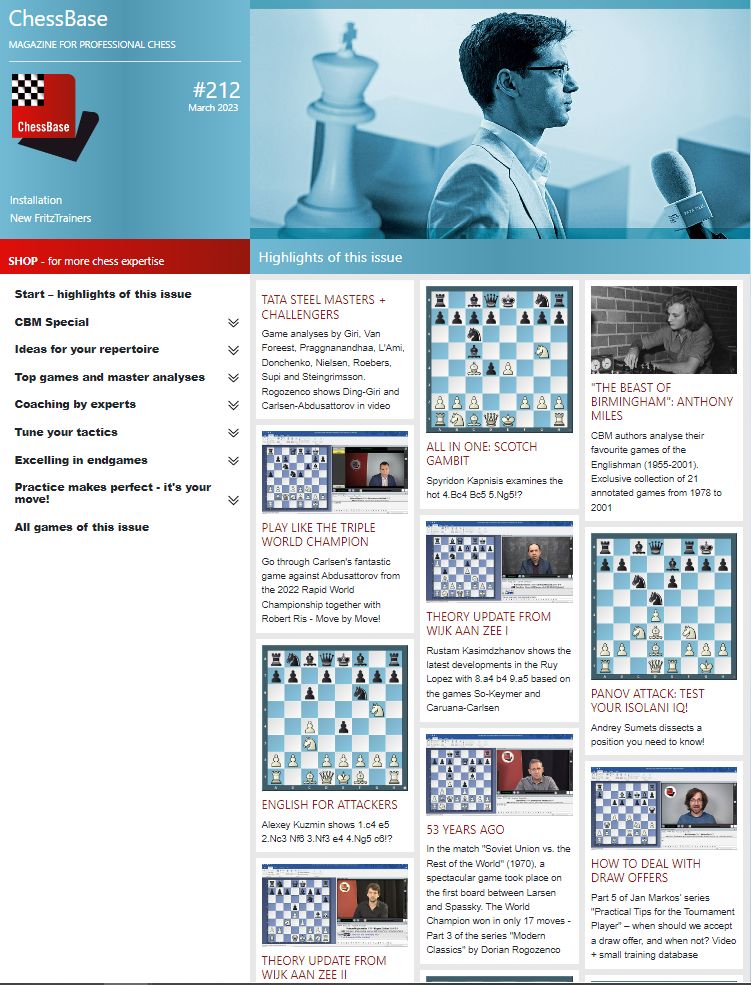
Top chess and master analyses

Tata Steel 2023: Anish Giri comments on three of his games, plus analyses by Praggnanandhaa, Jorden van Foreest, Peter Heine Nielsen, the winner of the Challenger, Alexander Donchenko and many others. Dorian Rogozenco presents two games in the video that were decisive for the outcome of the Masters!
Rapid Highlights: Anish Giri, Jan-Krzysztof Duda and Peter Heine Nielsen analyse selected games from the Rapid Chess World Championship and the Meltwater Champions Chess Final 2022.
Special: Anthony Miles
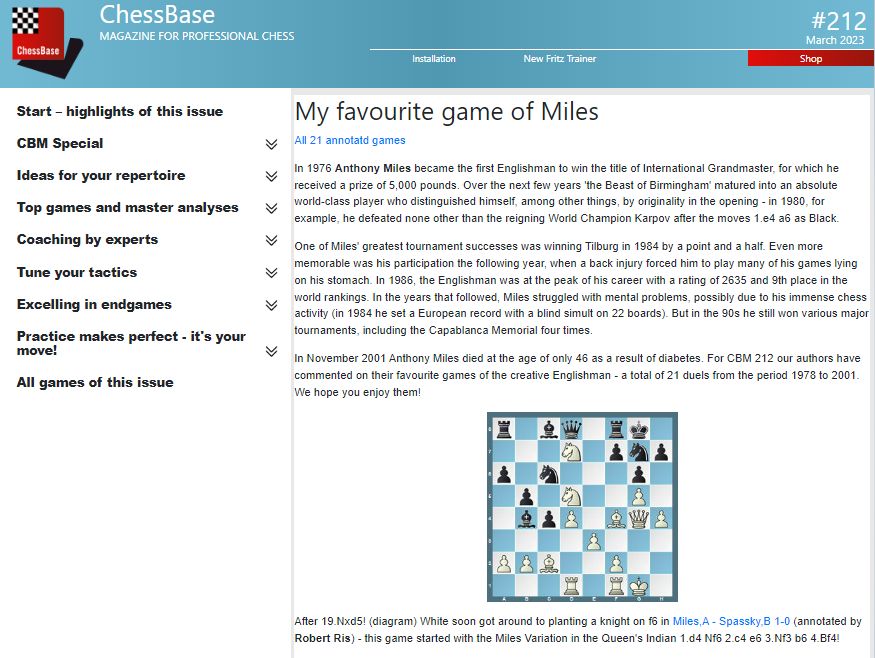
CBM authors analyse their favourite game of the Englishman (1955-2001). Exclusive collection of 21 annotated games from the years 1978 to 2001.
Practical tips for the tournament player
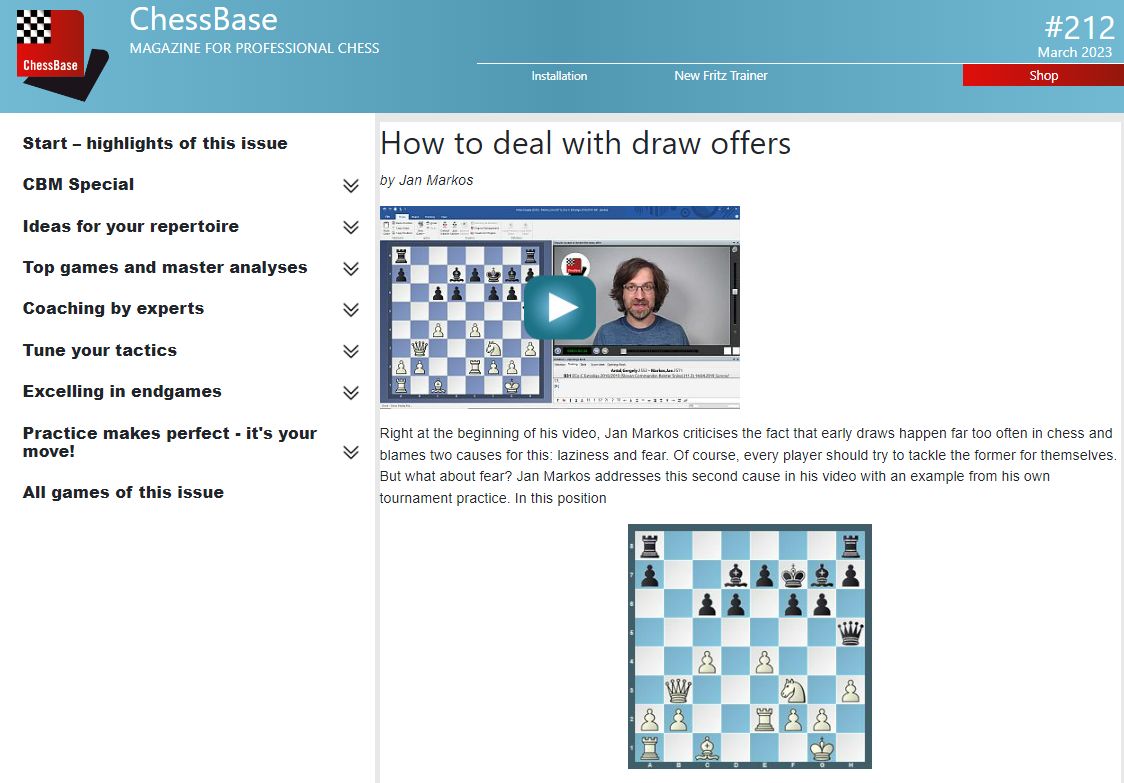
When should you accept a draw offer and when not? Which emotional aspects can influence our decision, and how can we block them out as best we can? Don’t miss part 5 of the training series “Practical Tips for the Tournament Player” with GM Jan Markos. Video + small collection of exercises.
Move by Move

Robert Ris shows Magnus Carlsen's fantastic game against Nodirbek Abdusattorov from the 2022 Rapid World Championship. Can you find the moves of the triple world champion?
All in one
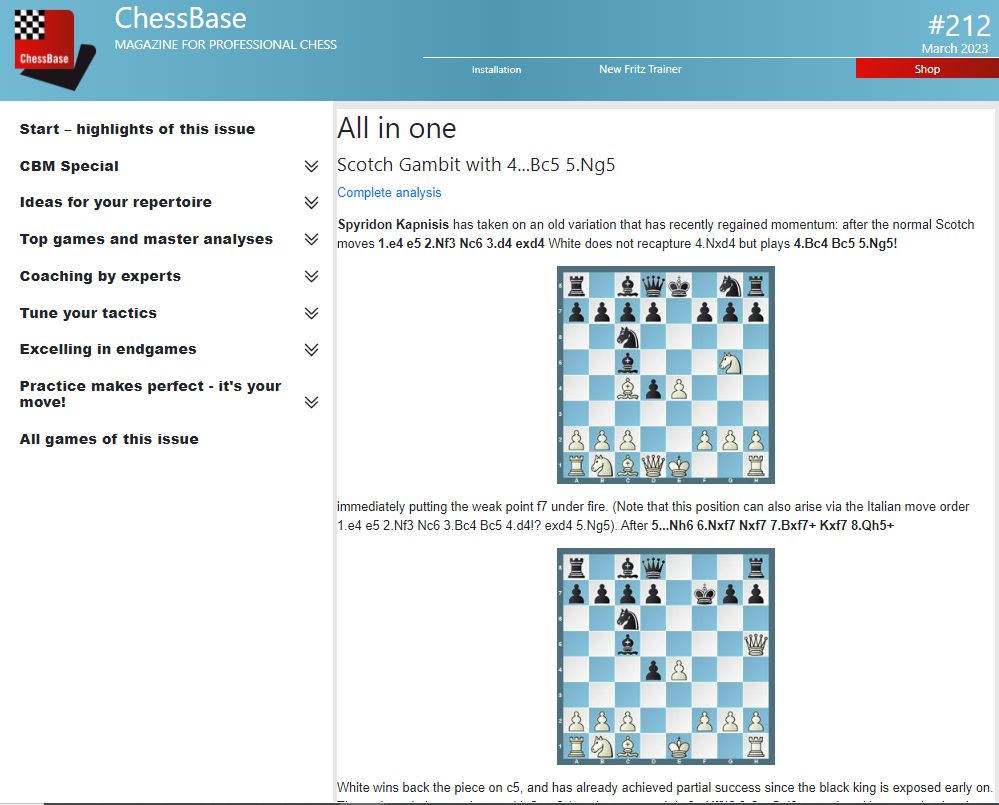
Spyridon Kapnisis presents the Scotch Gambit: 1.e4 e5 2.Nf3 Nc6 3.d4 exd4 4.Bc4 Bc5 5.Ng5!? After 5...Nh6 6.Nxf7 Nxf7 7.Bxf7+ Kxf7 8.Qh5+ White wins back the piece on c5 and has in any case already achieved a partial success.
Opening videos
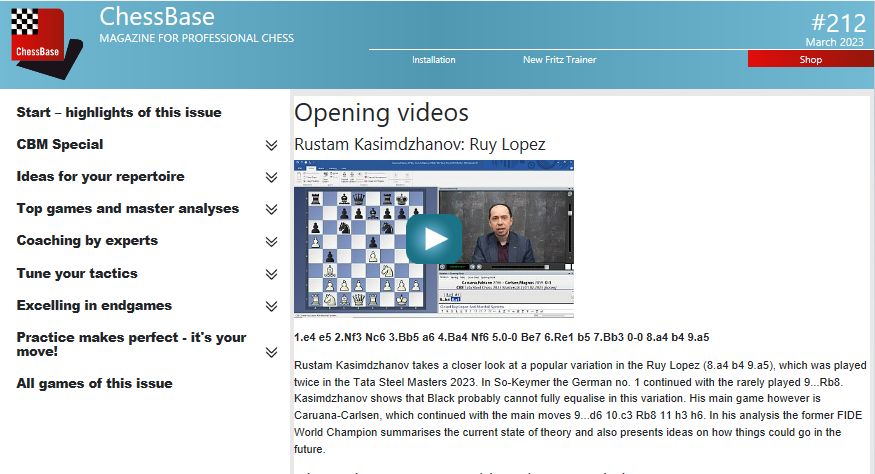
All three opening videos pick up current ideas from the top tournament in Wijk aan Zee! Rustam Kasimdzhanov examines the Ruy Lopez with 8.a4 b4 9.a5, which came on the board twice at the "Masters". Nico Zwirs examines Magnus Carlsen's idea of 7...Bg4 in the Exchange Variation of the Queen's Gambit. And Mihail Marin puts the Evans Gambit from Beerdsen-Pechac from the "Challengers" to the test.
Rustam Kasimdzhanov: Ruy Lopez
1.e4 e5 2.Nf3 Nc6 3.Bb5 a6 4.Ba4 Nf6 5.0-0 Be7 6.Re1 b5 7.Bb3 0-0 8.a4 b4 9.a5
Mihail Marin: Evans Gambit
1.e4 e5 2.Nf3 Nc6 3.Bc4 Bc5 4.b4 Bxb4 5.c3 Ba5 6.d4 d6 7.Qb3 Qd7 8.0-0 Bb6 9.Nbd2
Nico Zwirs: Queen’s Gambit Exchange Variation
1.d4 d5 2.c4 e6 3.Nc3 Nf6 4.cxd5 exd5 5.Bg5 Be7 6.e3 h6 7.Bh4 Bg4
New ideas for your repertoire

From the Reti Opening to the King's Indian - ChessBase Magazine #212 offers 11 opening articles with new ideas for your repertoire!
Vogel: Reti Opening 1.Nf3 d5 2.g3 b6
Kuzmin: English 1...e5 2.Nc3 Nf6 3.Nf3 e4 4.Ng5 c6
Sumets: Caro-Kann Exchange 4.c4 Nf6 5.Nc3 e6
Papp: Najdorf 6.Bg5 e6 7.f4 h6 8.Bh4 Qb6 9.a3
Santiago: French 1.e4 e6 2.d4 d5 3.Nc3 a6!?
Schandorff: Scotch with 4...Bc5 and 7...a5!?
Ris: Italian Ulvestad Variation 5...b5!?
Srinath: Open Ruy Lopez Part II
Postny: Nimzo-Indian 4.Nf3 0-0 5.Bg5 c5 6.Rc1
Grigoriants: Catalan 6...dxc4 7.Qc2 b5 8.a4
Szabo: King's Indian 5.Be2 0-0 6.Be3 e5 7.d5
Topical opening traps
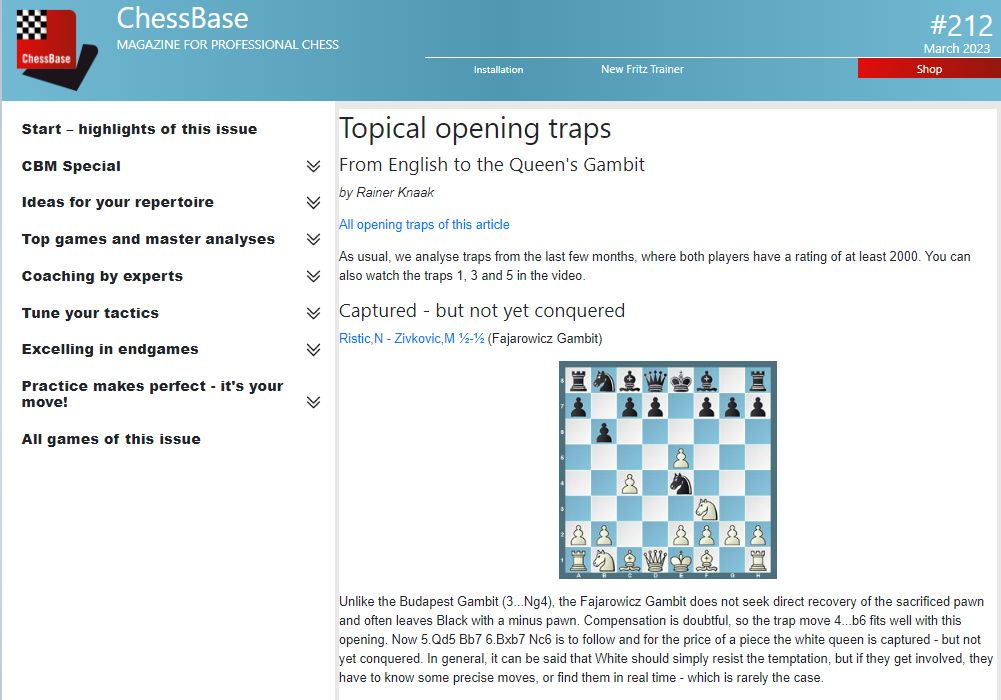
“From the English Opening to the Queen’s Gambit” – Rainer Knaak takes a close look at eight traps from current tournament practice (incl. three FritzTrainer videos)
Strategy: "Positional Milestones"
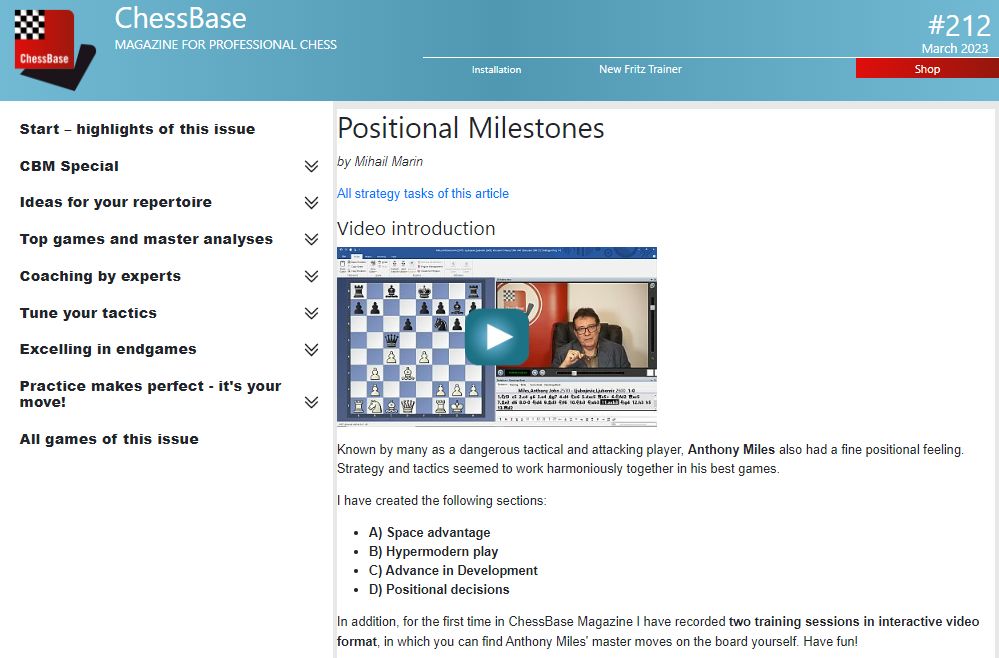
Mihail Marin presents the legend from England, Anthony Miles, as a universal player and explains how strategy and tactics worked together harmoniously in his best games. Including a detailed video introduction and – for the first time in CBM – two interactive training videos!
Modern Classics
Dorian Rogozenco shows one of the most spectacular games from the match "Soviet Union vs. the Rest of the World" in 1970: Bent Larsen came to blows on the first board of the world selection in only 17 moves. against world champion Boris Spassky! Part 3 of the new video series.

Tactics: "Queenless and happy"
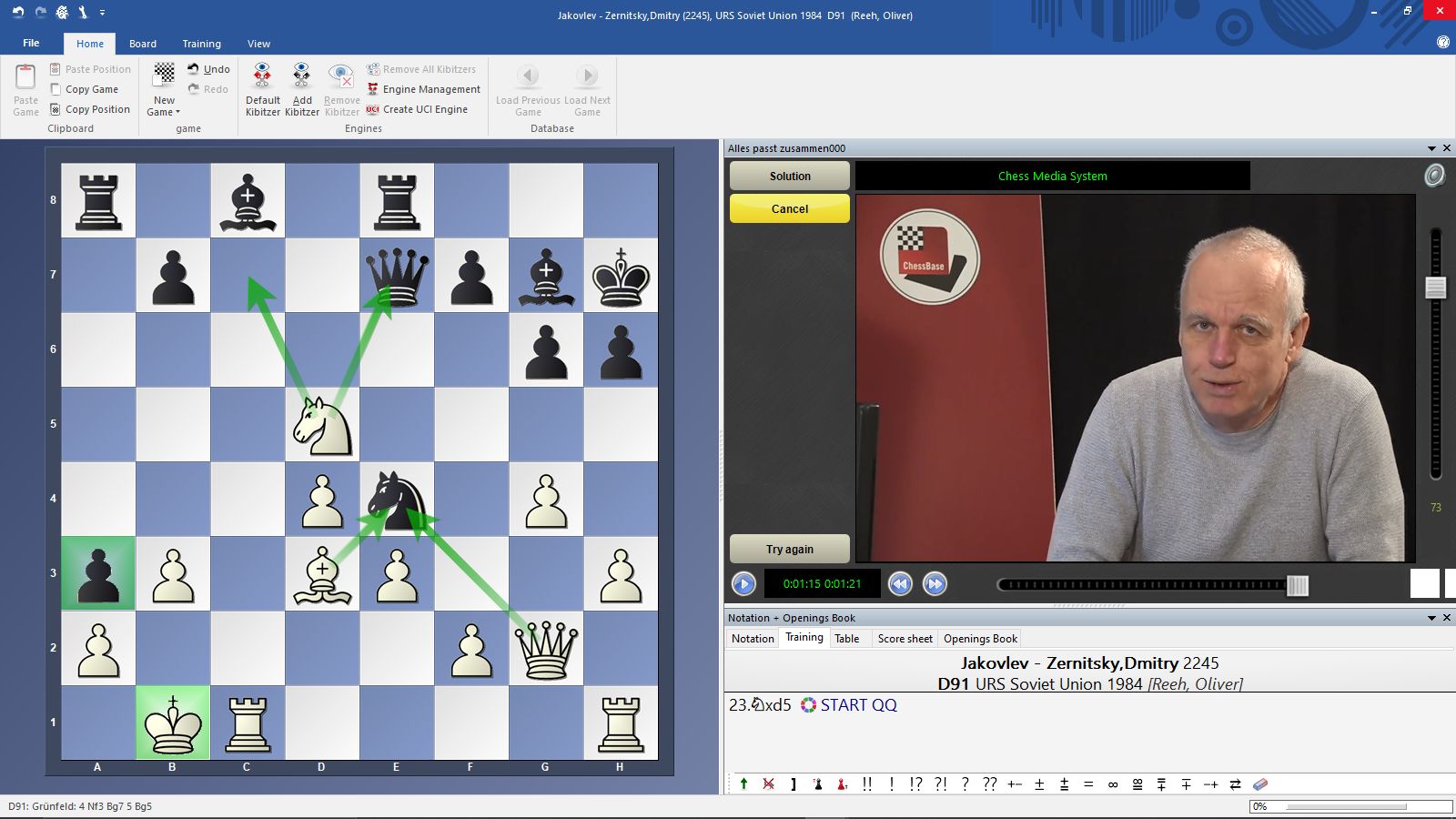
Sometimes it is simply necessary to part with one's queen. Oliver Reeh's article contains 32 games, peppered with plenty of training exercises. Plus three interactive videos with our author’s favourite combinations.
Fundamental Endgame Knowledge II
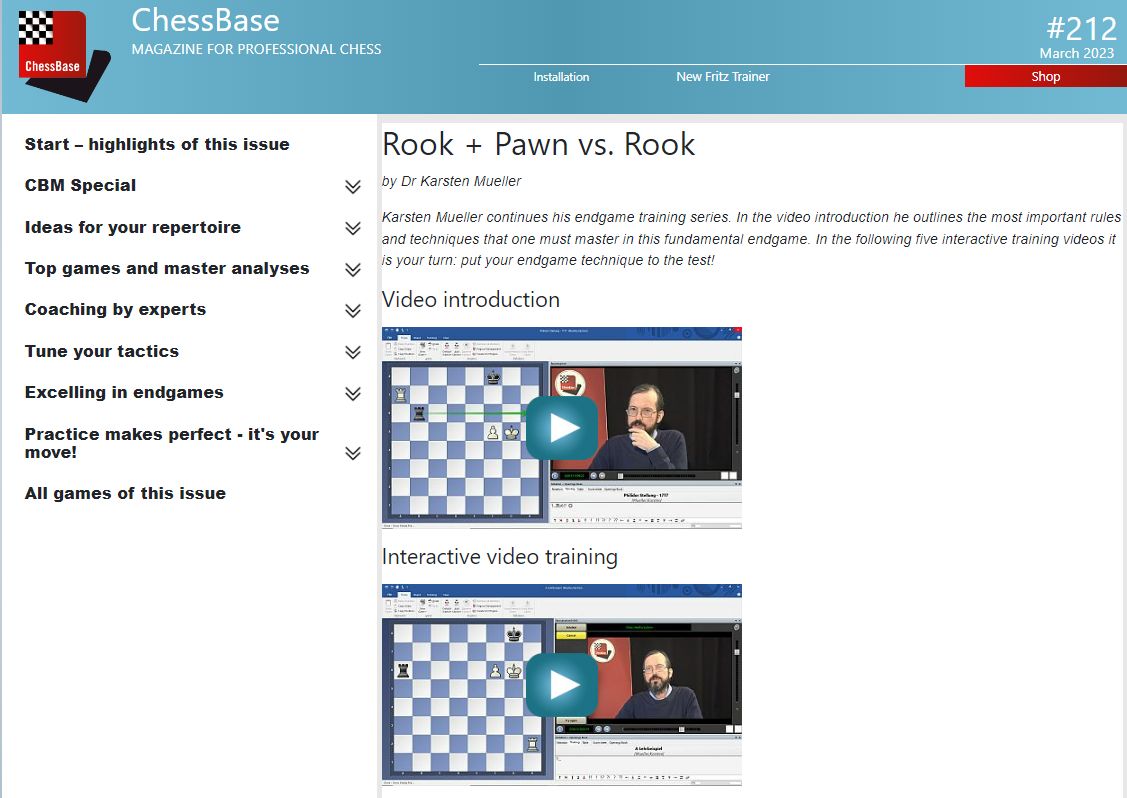
The endgame expert Dr Karsten Mueller continues his training series with the topic "Rook + Pawn vs. Rook". Also: Endgame highlights of Anthony Miles.

Order now in the ChessBase Shop !
ChessBase Magazine trial subscription with 33% savings advantage and thank you bonus!*
Try out ChessBase Magazine now! Order the ChessBase Magazine taster package!
Read ChessBase Magazine for 6 months (= 3 issues) for the special price of only 39.90 € (instead of 59,85 € for buying them individually). As a thank you, you will also receive 3 months ChessBase Premium Membership free of charge.
*Bonus for new subscribers only, i.e. there was no CBM subscription for 12 months!
ChessBase Magazine one year subscription - plus original ChessBase USB stick with 128 GB *
Save twice with ChessBase Magazine: For the annual subscription to ChessBase Magazine you’ll pay only €99.70 per year (compared to €119.70 for the 6 individual issues).
* Bonus only for new subscribers, i.e. there was no CBM subscription for 12 months! As a new subscriber you will receive the original ChessBase USB stick with 128 GB
